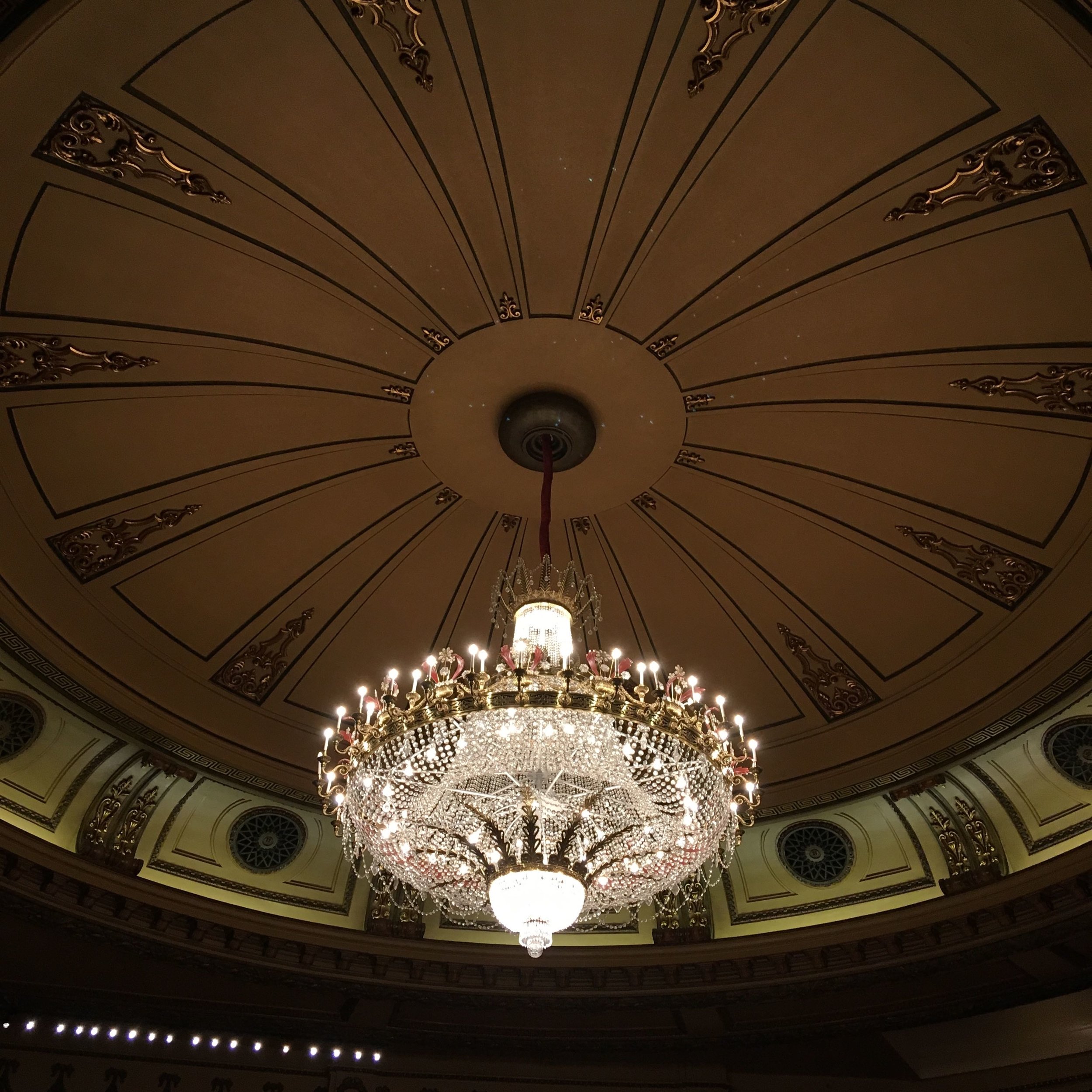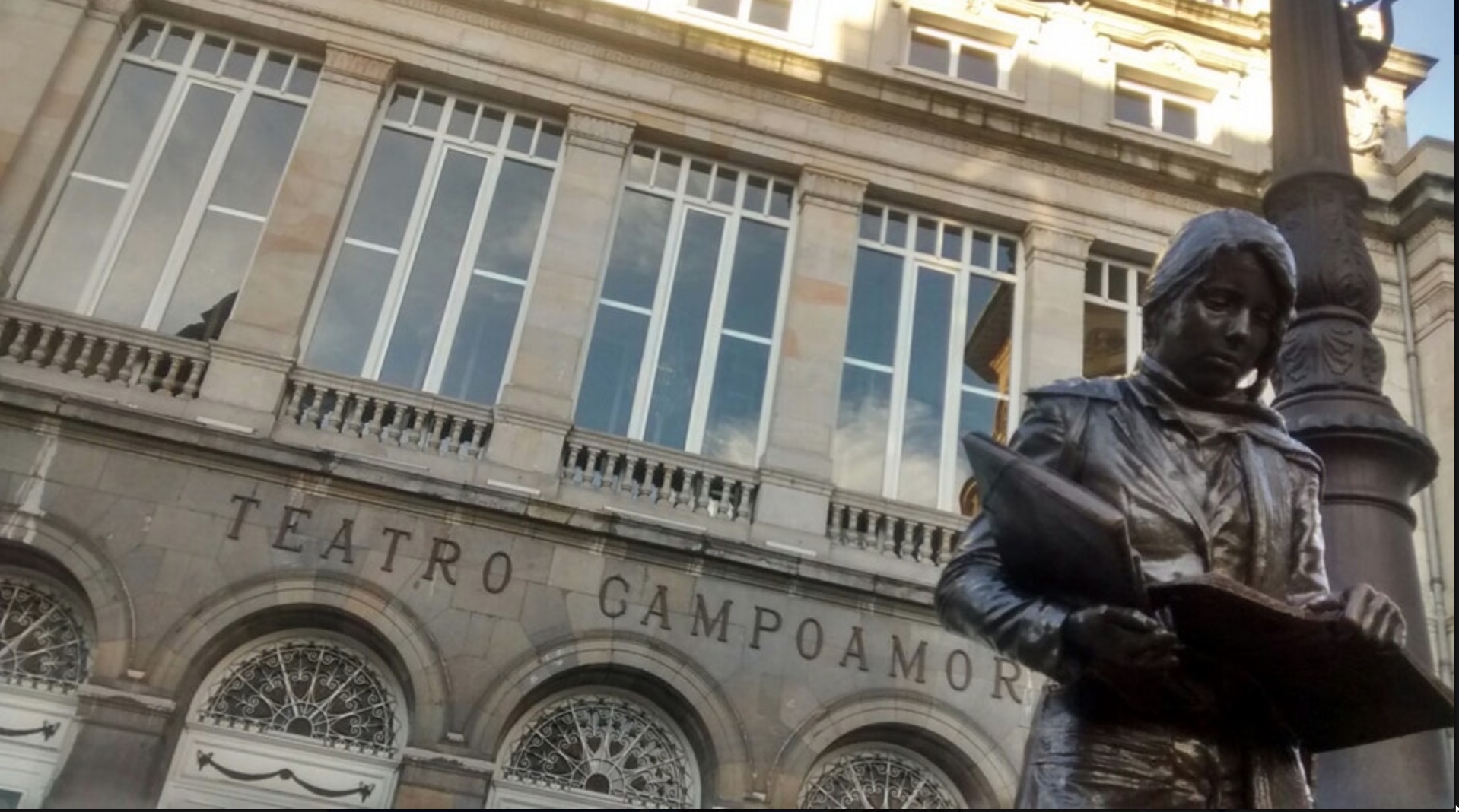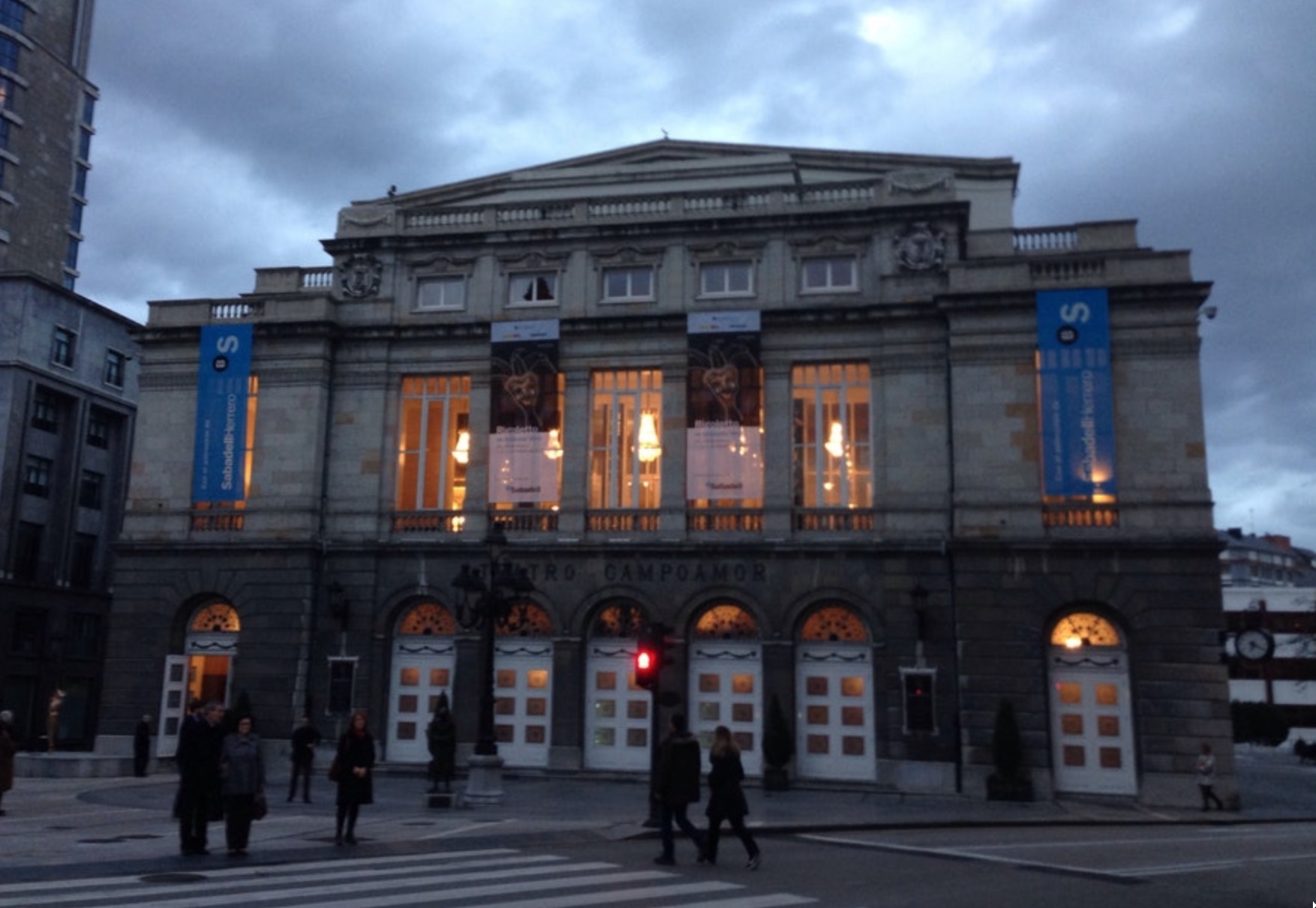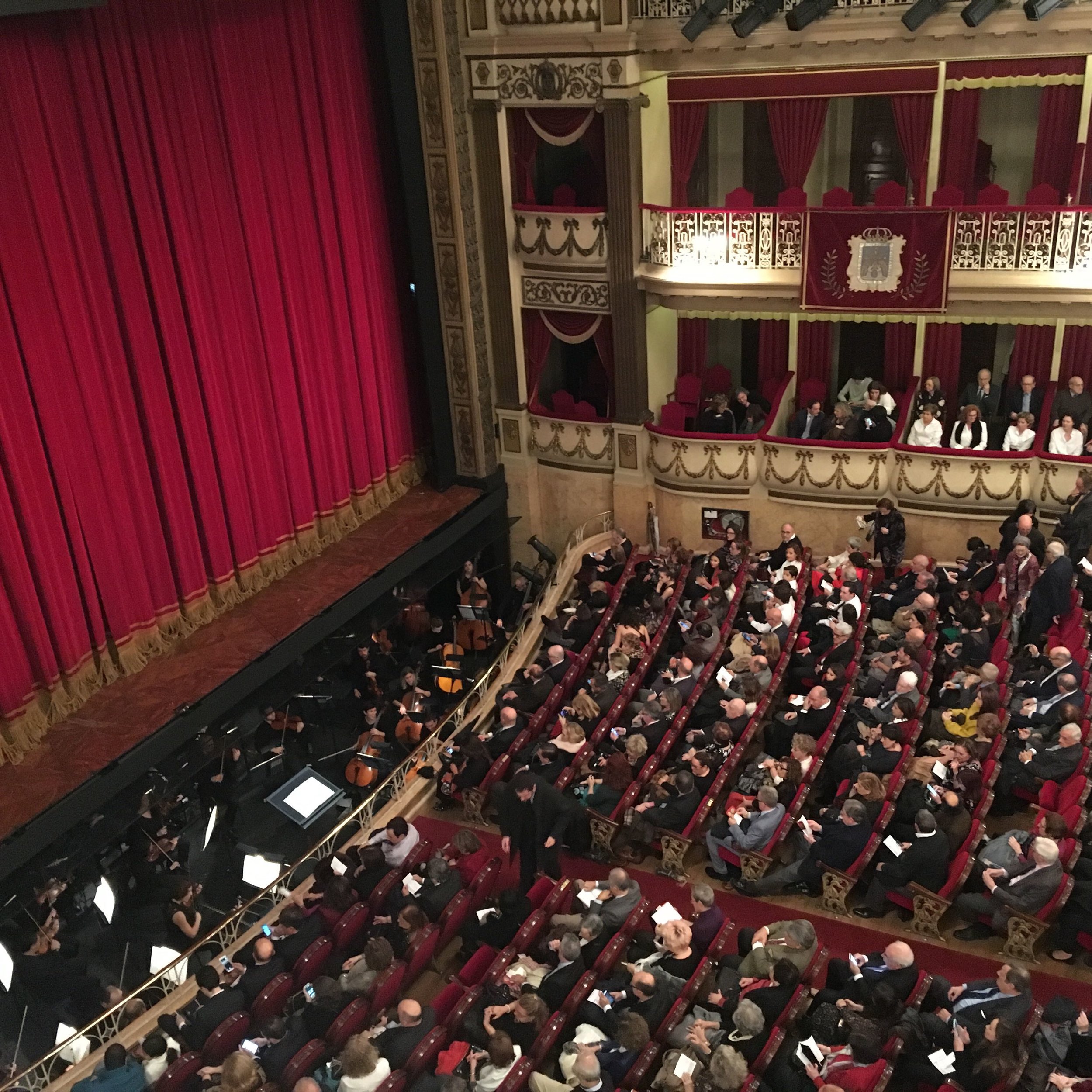Zarzuela in Oviedo (April 12, 2018)

(I’m taking a slight detour from my recent recounting of our travels to report on a more recent event here in Oviedo. My half-dozen faithful readers will just have to wait with baited breath for the travelogue to resume.)
A few weeks ago I saw posters here in Oviedo for the 25th Festival of Spanish Lyric Theater (XXL Festival de Teatro Lírico Español Oviedo). In my extensive musical training back in the middle of the 20th century, I read a footnote somewhere in a music-history textbook that described zarzuela as Spanish operetta—something like Gilbert and Sullivan but in Spanish for a Spanish audience. They were performing “La Malquerida” in Oviedo on the 83rd anniversary of its premiere on April 12, 1935. Since I had never seen this relic of earlier times, I was immediately intrigued.
We joined with our new expat friends, Pam and Murray, and bought tickets for “La Malquerida” April 12. And we were treated to an interesting period piece, lovingly mounted by the Teatros del Canal 7 and Palau les Arts Reina Sofía. To get the obvious out of the way immediately: the singing, acting, staging, and orchestral performances were absolutely first-rate, as we have come to expect in Oviedo, our new home town. The turntable set, which moved to mark scene changes was very creative, as were the occasional “stop-action” scenes that suggest the freeze-frame techniques that we see in films.
As for the operetta itself—what a mélange of influences! “La Malquerida” (which translates as “the unloved woman”) is a tragedy based on a Spanish couplet:
“Who loves the maid that dwells by the Mill
Shall love in evil hour;
Because she loves with the love that she loves,
Call her the Passion Flower.”
The story concerns the illicit love between a girl named Acacia and her step-father, which ends in the death of nearly everyone involved. Acacia was the only principal character left standing at the end. It is based on the 1913 play by Jacinto Benavente, a Nobel Prize winner for his theater works. It must have been scandalous when it was first produced.
In the style of tragedies from Shakespeare to the 20th century, the heavy dramatic scenes are interspersed with comic interludes performed by a group of servants of the house of Raimunda, Acacia’s widowed mother. Raimunda has unfortunately remarried to Estaban, generating the love triangle that is the center of the action. The comic scenes could be right out of Gilbert and Sullivan operettas—lots of innocent tomfoolery and sexual innuendo, with just a hint that these servants know full well about the goings-on in the household of Raimunda.
I sensed Gilbert and Sullivan lurking in the wings all evening, with lots of waltz time arias filled with rhymed couplets interspersed with spoken scenes that carry the story forward. A second influence I noticed was Hollywood films of the 1920s and 30s. For example, some of the spoken scenes are accompanied by soft background orchestral music, much like the wall-to-wall musical padding of early films. This “padding” was originally intended to block out the noise of the projectors in early movie theaters, but it served no similar purpose in this zarzuela.
Speaking of early films, “La Malquerida” was made into the 1921 Hollywood film “The Passion Flower,” starring Norma Talmadge. However, in the film the murderers are arrested in the end, while in the zarzuela version they are shot on stage in the back of the head in true vigilante justice. The piece was, after all, premiered in 1935, just one year before the beginning of the Spanish Civil War, and we all know that the late dictator, Franco, was fond of summary justice and execution by firing squad.
My general criticism of “La Malquerida” is that the various parts—upbeat waltz music combined with heavy drama—don’t fit together to make a unified whole. But, as a visit to a period piece, it was a fine and enjoyable evening. Kudos to the performers and production staff. And to Oviedo for having such excellent theater and musical offerings. We are privileged to be living here.




